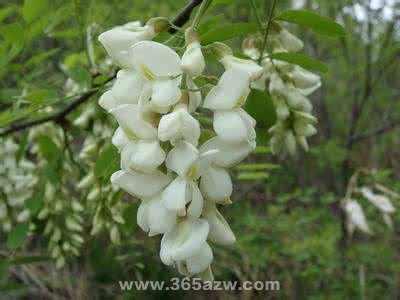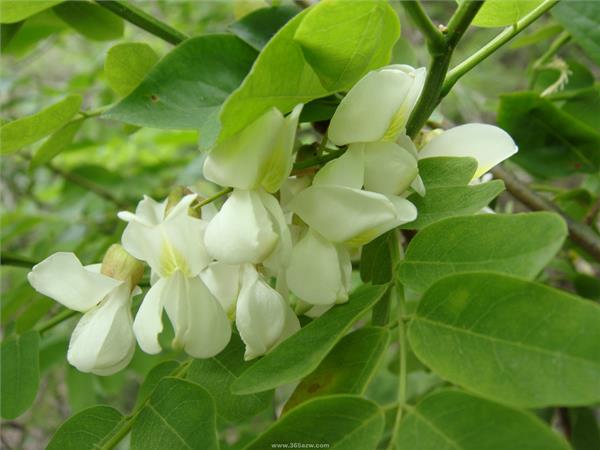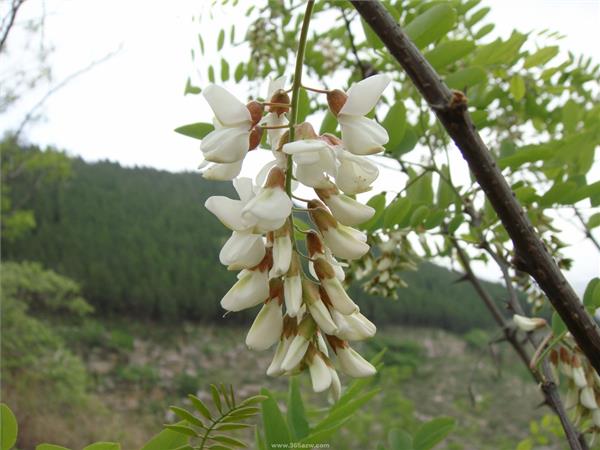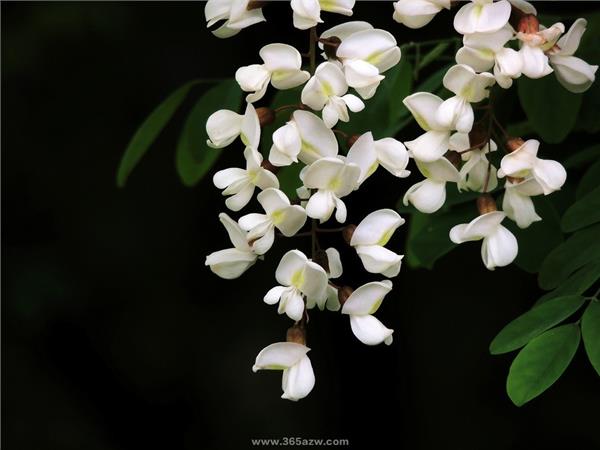Detailed introduction of growth habits and morphological characteristics of Robinia pseudoacacia
Deciduous trees, 10-25 meters high; bark grayish brown to dark brown, shallowly split to deep longitudinal crack, let's take a look at the growth habits and morphological characteristics of Sophora japonica in detail.

Detailed introduction of growth habits and morphological characteristics of Robinia pseudoacacia
Branchlets gray-brown, ridged when young, puberulent, later glabrous; stipules spiny, to 2 cm long; winter buds small, hairy. Pinnately compound leaves 10-25 (- 40) cm long; rachis grooved; leaflets 2-12 pairs, often opposite, elliptic, long elliptic or ovate, 2-5 cm long and 1.5-2.2 cm wide, apex round, retuse, apiculate, base rounded to broadly cuneate, entire, upper green, gray-green below, pubescent when young, then glabrous; petiolule 1-3 mm long Stipules Awned, racemes axillary, 10-20 m long, pendulous, flowers numerous, fragrant; bracts caducous; pedicels 7-8 mm long; calyx obliquely campanulate, 7-9 mm long, calyx teeth 5, triangular to ovate-triangular, densely pilose.
Corolla white, each petal with petal stalk, flag suborbicular, 16 mm long, 19 mm wide, apex emarginate, base round, reflexed, macular inside, wing valve obliquely Obovate, equal to the upper petal, ca. 16 mm long, basal side with round ears, keel sickle, triangular, as long as or slightly shorter with the wing, leading margin connate, apex obtuse; stamens disomic, 1 separate from the flag Ovary linear, ca. 1.2 cm long, glabrous, stalk 2-3 mm long, style subulate, ca. 8 mm, upcurved, apical hairy, stigma terminal. Pods brown, or with reddish brown markings, linear-oblong, 5-12 cm long, 1-1.3 (- 1.7) mm wide, flattened, apex curved, pointed, neck short, narrowly winged along ventral suture; calyx persistent, with 2-15 seeds; seeds brown to dark brown, slightly glossy, sometimes striate, subreniform, 5-6 mm long, ca. 3 mm wide, navel rounded, partial to one end. The flowering period is from April to June and the fruiting period is from August to September.

Water-tolerant plants, light-loving plants. Robinia pseudoacacia likes light, warm and humid climate, and grows well in places with an average annual temperature of 8: 14 ℃ and annual precipitation of 500 mm and 900 mm. Robinia pseudoacacia is not strict with soil and has strong adaptability. Most like deep, fertile, loose, moist silt, sandy loam and loam. Insensitive to soil acidity and alkalinity. It grows poorly on clay and coarse sand where the subsoil is too sticky and hard and poorly drained. Although it has a certain ability to resist drought, it often withered shoots in the severe drought season when there is no rain for a long time. I can't bear to get wet. Afraid of the wind. It grows fast and is an important fast-growing tree species in the world. The root is shallow and the crown is thick.

Flowers contain concanavalin, tannins, flavonoids and ricin.
Nectar contains 0.37% sugar and a variety of amino acids such as aspartic acid, glutamic acid, histidine, arginine, lysine, ornithine, leucine, phenylalanine, valine, tyrosine, proline and threonine, and its content is 0.002-4.786 mg% of the dry weight of nectar.
The leaves contain sophoroside, that is, the evaluation of samarium? Glucoside, sophorin triglycoside, that is, rhamnose-xylose-glucoside of sophorin, apigenin diglycoside, rhamnose-xylose-glucoside of apigenin, and a large amount of n-hexanol, as well as concanavalin. Fresh leaves contain vitamin C-119.3 mg%.
Immature seeds and their outer skins contain concanavalin. Seeds contain plant lectins. The fatty acid composition of seed oil is linoleic acid 53.18%, oleic acid 24.26%, linolenic acid 12.04%, palmitic acid 4.72%, peanut acid 3.31%, stearic acid 2.35%, trace docosanoic acid and tetracosanoic acid.
The bark is poisonous and contains toxic proteins and glycosides. Heartwood contains Robinia pseudoacacia B, dihydroRobinia pseudoacacia B, β-dihydroxybenzoic acid, β-dihydroxybenzoic acid, methyl β-dihydroxybenzoate, 4meme 2min 4-trihydroxychalcone, glycyrrhizin, purple rivetin, purple riveting, 3pm-5pm-5-hydroxy-chalcone.

Deciduous trees of Robinia pseudoacacia, usually about 15m tall. Bark grayish brown, deeply longitudinally lobed; branchlets dark brown, spiny, glabrous; winter buds small, hidden in petiole base before defoliation. Leaves odd-pinnate, rachis shallowly sulcate, base inflated; leaflets 7-19 elliptic, oblong or ovoid, 2-5.5cm long, 1-2cm wide, apex rounded or retuse, sometimes spinulose, base rounded or broadly cuneate, entire, upper glabrous or abaxially minutely hairy when young; petiolules ca. 2mm, with spiny stipules. Racemes axillary, pendulous, 10-20cm long, rachis hairy, pedicels long 7mm, densely hairy; calyx campanulate, apex lobed into 5 teeth, slightly 2-lipped, pilose; Corolla white, fragrant, flag petals suborbicular, clawed, base with 2 yellow spots, winged, keel bent, proximally commissural; stamens 10, disomic, distally detached or semi-detached; style capitate, apex pilose. The pod strip is long-elliptic, flattened, 5-10cm long, wide l-1.5cm, reddish brown, with narrow wings on the ventral suture and no diaphragm between seeds. Seeds 3-10, reniform, dark brown, with minute black spots. The flowering period is from April to June and the fruiting period is from July to August.
Apex pilose. The pod strip is long-elliptic, flattened, 5-10cm long, wide l-1.5cm, reddish brown, with narrow wings on the ventral suture and no diaphragm between seeds. Seeds 3-10, reniform, dark brown, with minute black spots. The flowering period is from April to June and the fruiting period is from July to August.
Related
- Wuhan Hospital Iron Tree Blooming Result Was Instantly Frightened by the Gardener Master
- Which variety of camellia is the most fragrant and best? Which one do you like best?
- What is the small blue coat, the breeding methods and matters needing attention of the succulent plant
- Dormancy time and maintenance management of succulent plants during dormancy
- Minas succulent how to raise, Minas succulent plant pictures
- What are the varieties of winter succulent plants
- How to raise succulent plants in twelve rolls? let's take a look at some experience of breeding twelve rolls.
- Attention should be paid to water control for succulent plants during dormant period (winter and summer)
- Watering experience of twelve rolls of succulent plants
- Techniques for fertilizing succulent plants. An article will let you know how to fertilize succulent plants.



